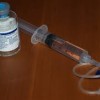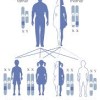Laboratory proficiency test results on use of selective media for isolating Pseudomonas cepacia from simulated sputum specimens of patients with cystic fibrosis
Abstract
Pseudomonas cepacia colonization of or infection in patients with cystic fibrosis (CF) has been associated with increased morbidity and premature death. However, current data on national incidence may be biased because of interlaboratory differences in the methods of culturing sputa of patients with CF.… Read more












